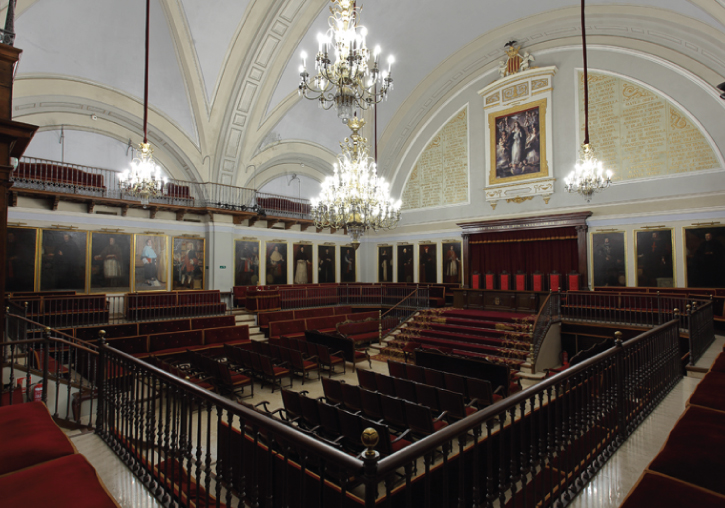
On 28 of February, The Regional Ministry of Culture, Education and Sport granted recognition as a museum to the heritage spaces of the Centre Cultural La Nau. This year the Area of Cultural Heritage of the Universitat de València celebrates the International Day of Museums on the 18 of May with a open doors day at La Nau that will include guided visits at 12 and 18 h to know the most emblematic places of the Universitat de València history.
Each of the visits will start at the Aula Magna where the video La Nau: Un camino de siglos (La Nau: A Journey Through Centuries) will be presented. This documentary shows a diachronic journey of the evolution of this building, which that had its origins in several houses acquired by the City Council of València in 1493 in the old Jewish quarter of the city. The activity is free with registration in this link.
La Nau, as well as having established itself as a cultural centre of reference in the city of Valencia with an extensive programme of activities related to art exhibitions, theatre, music, comics and cinema, among others, has recently been recognised as a museum for the value of its spaces and collections. Specifically, the Sala Duque de Calabria, the Patio Rectoral, the Capilla of the Sapiencia, the Claustro and the Paraninfo.
This historic building, declared an Asset of Cultural Interest in 1981, is the oldest and most emblematic of the Universitat de València. It has been the main campus from its foundation at the end of the 15th century until the middle of the 20th century when the faculties were installed on the Blasco Ibáñez campus. Of Valencian neoclassical architecture, especially in its facades and cloister. Its current architectural configuration is the result of a succession of interventions that have adapted the building to its different functions and needs over more than five centuries, from the first works commissioned to Pere Compte to the most recent interventions (1999 and 2012).




